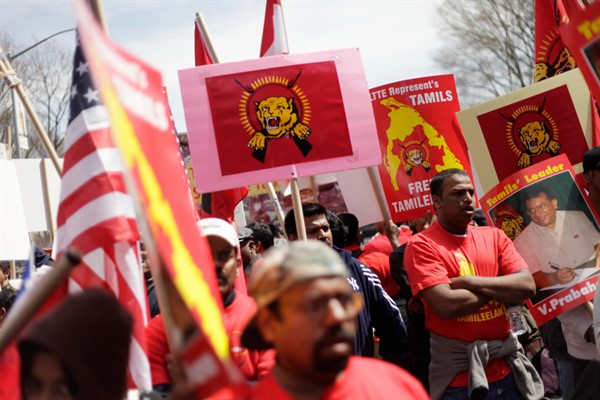On a snowy afternoon in January, 24-year-old Thanujan Sellathurai delivered a speech in front of a small crowd of protesters from the Tamil community in Geneva. He called for the United Nations, which has several of its agencies headquartered there, to condemn the “brutal atrocity” that had just taken place in Sri Lanka.
Authorities at the University of Jaffna, on the northern tip of Sri Lanka, had ordered the bulldozing of a memorial paying tribute to the victims of the Mullivaikkal massacre, a mass killing of Tamil civilians that took place in May 2009, during the last few days of the country’s civil war. The monument had been built by the university’s own students and other locals in Jaffna, and showed blue arms reaching out of a pile of rubble.
The demonstration in Geneva was a moment that echoed the long history of Tamil protest. Twelve years earlier, in February 2009, Tamil diaspora communities had gathered in Geneva, as well as in London, Paris, Toronto, Sydney and various other cities around the world, to call on the U.N. to intervene in the war between the Sri Lankan military and the Liberation Tigers of Tamil Eelam, known as the LTTE or the Tamil Tigers. The protests in Geneva became desperate, as a 26-year-old refugee, Murugathasan Varnakulasingham, died after setting himself on fire in front of the U.N.’s Palace of Nations complex in an attempt to draw attention to the plight of Tamils back home. In a note found near his body that day, he reportedly wrote, “We Tamils, displaced and all over the world, loudly raised our problems and asked for help before [the] international community in your own language for three decades. But nothing happened.”

